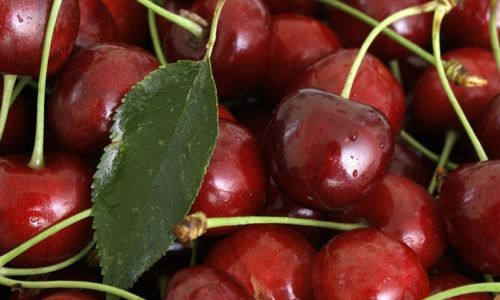Table of content
Cherries, with their vibrant hues, juicy texture, and sweet-tart flavor, are a beloved seasonal treat enjoyed across the globe. However, their delicate nature makes them prone to spoilage, leaving many consumers wondering how to preserve their freshness for as long as possible. This article delves into the science behind cherry preservation, explores optimal storage methods, and provides actionable tips to extend their shelf life. By understanding the factors that influence cherry degradation—such as temperature, humidity, and handling—you can savor these gems well beyond their typical harvest season.
The Perishability of Cherries: Understanding the Basics
Cherries belong to the Prunus genus, a family of stone fruits that includes peaches, plums, and apricots. Like their cousins, cherries have a short post-harvest life due to their high water content (approximately 80–85%), thin skin, and susceptibility to ethylene gas—a natural plant hormone that accelerates ripening and decay. Ethylene production intensifies as cherries mature, making timely storage critical.
The clock begins ticking the moment cherries are picked. At room temperature (68–77°F or 20–25°C), they may last only 2–4 days before showing signs of deterioration, such as wilting, discoloration, or mold growth. Refrigeration slows this process but requires careful execution to avoid moisture-related issues. Freezing, while effective for long-term storage, alters texture and is best suited for culinary applications rather than fresh consumption.
Key Factors Affecting Cherry Shelf Life
-
Temperature Control
Cherries thrive in cold environments. The ideal storage temperature hovers between 32–36°F (0–2°C), which inhibits microbial growth and slows enzymatic reactions responsible for ripening. Avoid temperatures below freezing, as this damages cell structures and leads to mushiness upon thawing. -
Humidity Levels
Maintaining high humidity (90–95%) prevents cherries from drying out. However, excess moisture can promote mold. Use perforated plastic bags or containers with ventilation to balance humidity and airflow.
-
Ethylene Sensitivity
Cherries are highly sensitive to ethylene, emitted by fruits like apples, bananas, and avocados. Store cherries away from ethylene-producing produce to prevent premature ripening. -
Physical Damage
Bruising or puncturing the skin accelerates spoilage. Handle cherries gently during harvest, transport, and storage.
Step-by-Step Guide to Storing Cherries
Refrigeration: The Short-Term Solution
Refrigeration is the go-to method for preserving cherries for up to 7–14 days. Follow these steps:
- Sort and Discard Damaged Fruit: Remove stems, leaves, or bruised cherries to prevent contamination.
- Do Not Wash Until Ready to Eat: Moisture encourages mold. Rinse cherries only before consumption.
- Use Breathable Containers: Place cherries in a plastic container lined with paper towels, or use a mesh produce bag to allow air circulation. Avoid airtight containers, which trap moisture.
- Store in the Crisper Drawer: Position cherries in the coldest part of your refrigerator, ideally in a drawer with adjustable humidity settings (set to “high”).
Freezing: The Long-Term Strategy
Freezing cherries can extend their lifespan to 8–12 months. However, texture changes are inevitable, making frozen cherries ideal for baking, smoothies, or sauces.

- Pre-Freeze Preparation:
- Wash and Dry: Gently rinse cherries under cold water and pat them dry with a clean towel.
- Pit or Keep Whole: Pitting reduces freezer burn but is optional. If pitting, use a cherry pitter or a straw to remove stones without bruising the flesh.
- Packaging Methods:
- Flash Freezing: Spread cherries in a single layer on a baking sheet and freeze for 2–3 hours. Transfer to airtight freezer bags or containers, removing excess air.
- Syrup Pack: For sweeter applications, submerge cherries in a syrup made of 1 part sugar to 4 parts water before freezing.
- Vacuum Sealing: Use a vacuum sealer to minimize oxygen exposure and prevent freezer burn.
Alternative Preservation Methods
- Canning: Preserve cherries in syrup or juice using a water bath canner. Processed jars can last 1–2 years when stored in a cool, dark place.
- Drying: Dehydrate cherries at 135°F (57°C) until leathery. Store in airtight jars for 6–12 months.
- Making Jams or Jellies: Cook cherries with sugar and pectin to create shelf-stable spreads.
Signs of Spoilage to Watch For
Even with proper storage, cherries will eventually degrade. Discard them if you notice:
- Mold or Fuzz: Gray, green, or white patches indicate fungal growth.
- Shriveling or Leakage: Dehydration or cell breakdown causes wrinkles or oozing.
- Off Odors: A fermented or sour smell signals spoilage.
- Unusual Texture: Mushiness or excessive softness.
Tips for Buying and Handling Cherries
- Select Wisely: Choose firm, plump cherries with glossy skin and green stems. Avoid those with bruises, cracks, or dull color.
- Buy in Small Batches: Purchase only what you can consume within a week to minimize waste.
- Avoid Overcrowding: Do not stack cherries in containers, as this causes bruising.
Creative Ways to Use Cherries Before They Spoil
- Baking: Incorporate cherries into pies, tarts, or muffins.
- Beverages: Blend frozen cherries into smoothies or use them to flavor water or cocktails.
- Savory Dishes: Pair cherries with meats like pork or duck in sauces or glazes.
- Desserts: Make cherry compote, sorbet, or chocolate-dipped treats.
Conclusion: Savoring Every Moment
Cherries are a fleeting delight, but with mindful storage practices, you can extend their freshness and enjoy their flavor for weeks or even months. Whether you opt for refrigeration, freezing, or preservation techniques like canning, the key lies in controlling temperature, humidity, and ethylene exposure. By treating these delicate fruits with care, you ensure that not a single cherry goes to waste—and that your taste buds can relish their summer sweetness long after the season has passed.






0 comments